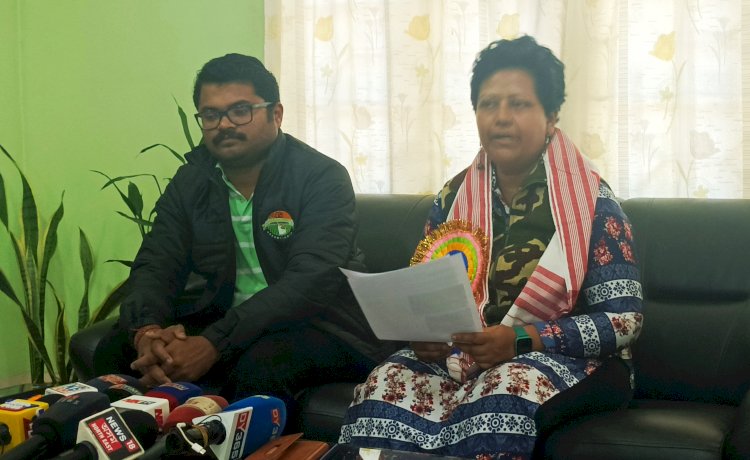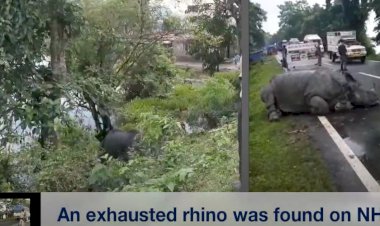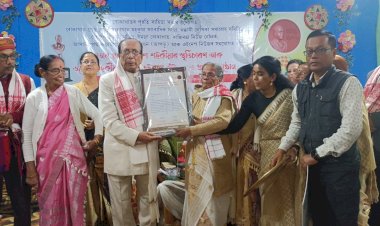'Kaziranga Bird Conservation Festival' to attempt largest citizen science initiative and 5th Waterbird Census in Kaziranga Tiger Reserve on January 9-10, 2024 : press release :

Aiidesh News : 25 December - 2023 :
Kaziranga Tiger Reserve and its surroundings are rich in avian diversity, boasting 521 species, including 62 globally threatened and near-threatened species. The park is renowned for its significant waterbird populations, particularly the Bar-headed Goose (Anser indicus). Waterbirds contribute to the diversity of other organisms, act as bioindicators of ecological conditions, control pests, and serve as sentinels of potential disease outbreaks. Consequently, waterbirds are considered key indicators of wetland health, and the wetlands in the Kaziranga landscape provide essential feeding, resting, roosting, and foraging habitats for these charismatic species. A substantial portion of the Kaziranga landscape comprises water bodies and grasslands, recognized as one of the best Important Bird Areas in India. From October to February, migratory birds traverse different flyways, and Kaziranga, along with the broader Assam area, falls under two major flyways – the Central Asian Flyway (CAF) and the East Asian-Australasian Flyway (EAAF). Most migratory waterbirds arrive from temperate regions of Eurasia, the Tibetan Plateau, Mongolia, Russia, Siberia, and Ladakh. Wagtails are among the first group of migratory birds to arrive in this landscape. Notably, many migratory waterbirds, such as the Bar-headed Goose, Greylag Goose, Ruddy Shelduck, Red-crested Pochard, Northern Lapwing, White Wagtail, Gadwall, Mallard, and Common Teal, have already been observed, along with some rare species like Baikal Teal, Greater White-fronted Goose, and Pied Avocet.`
Complementing these transient visitors are resident treasures, including the Spot-billed Pelican, Greater Adjutant, Lesser Adjutant, Pallas's Fish Eagle, Black-necked Stork, Grey-headed Fish Eagle, Lesser Whistling Duck, Cotton Pygmy-goose, Oriental Darter, River Lapwing, Red-wattled Lapwing, and Bronzed-winged Jacana.
Kaziranga National Park & Tiger Reserve has conducted four consecutive waterbird surveys from 2018-2019 to 2021-2022, recording a large assemblage of both resident and migratory waterbirds. For 2024, Kaziranga in partnership with the Bombay Natural History Society (BNHS), Local academic institutions and NGOs will organize the 'Kaziranga Bird Conservation Festival' from January 9 to 10. CSR support for the event is pitched to Numaligarh Refinery and State Bank of India. This year, the key difference is that enumerators and local youth volunteers shall be involved in enumerating birds making it one the largest citizen science initiative. The event will bring together renowned personalities, conservationists, and wildlife experts and will feature the 5th waterbird census in the park. The two-day festival will include live sessions, webinars, and a photography competition showcasing Kaziranga's diverse birdlife.
Under the theme "Conserving Birds using Citizen Science," the festival aims to actively involve ordinary citizens in monitoring and protecting bird populations. The census will cover approximately 80 wetlands with more than 10-hectare areas spread over the entire Kaziranga National Park & Tiger Reserve boundary, including Eastern Assam Wildlife Division, Biswanath Wildlife Division, and Nagaon Wildlife Division. Some wetlands outside the KNPTR boundary falling under the 1 km buffer area will also be included. Nature enthusiasts and students will have the opportunity to register as volunteers, with registration opening soon.














































